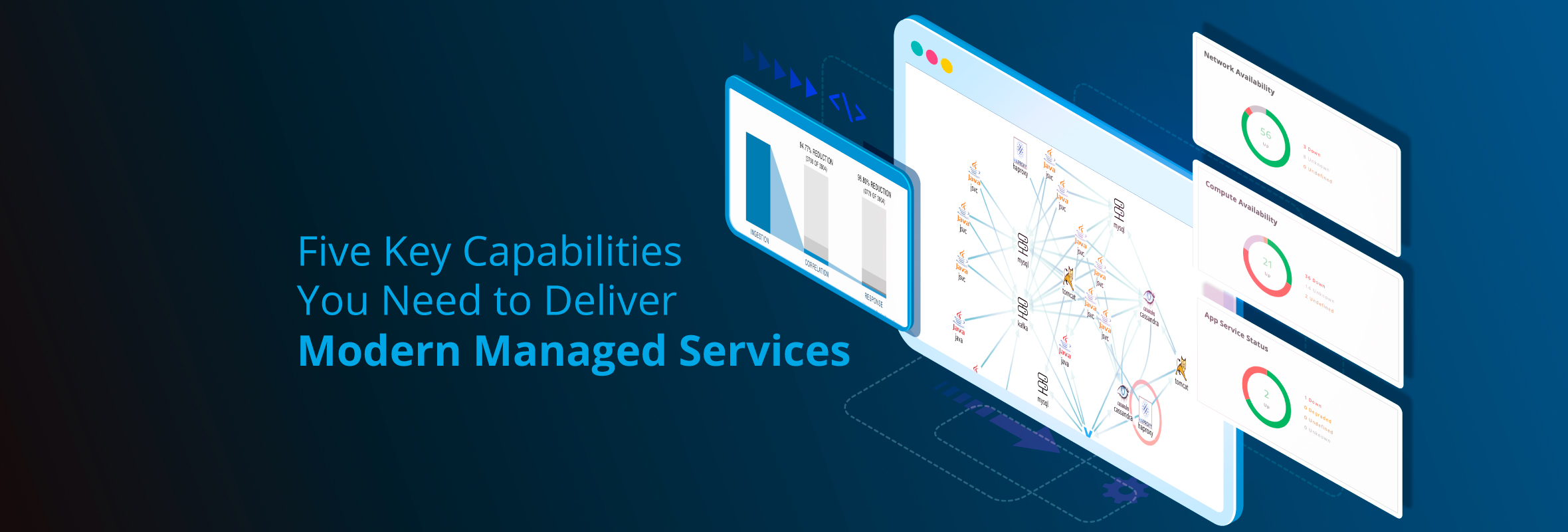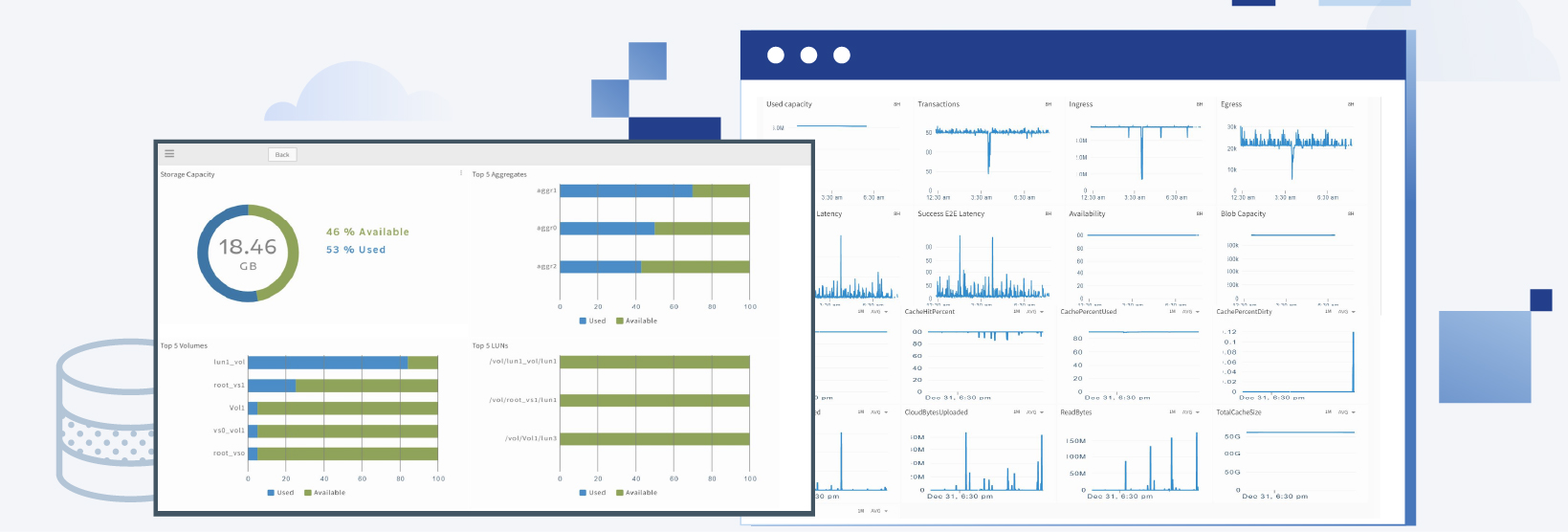The following post first appeared in DevOps.com.
In 2018, digital transformation ushered in a radical shift in how enterprises harness customer insights, technology capabilities, and rapid experimentation to drive revenue growth, profitability, and market leadership. Enterprises spent $1.3 trillion in 2018 on digital transformation technologies like public cloud platforms, microservices and containers, edge computing, machine learning, and artificial intelligence to improve customer experiences, business agility, and employee engagement.
Heading into 2019, digitalization will accelerate business model innovation and drive the adoption of these emerging technologies for sustainable competitive advantage. Here’s a closer look at five technology trends that will change the way enterprises approach digital operations management in 2019:
1. Multi-Cloud Adoption Goes Mainstream. In FY18 Q3, the three leading cloud platforms (Amazon Web Services, Microsoft Azure, and Google Cloud Platform) accounted for 65% of the market share of public cloud infrastructure and platform services. Enterprises are increasingly relying on multiple cloud providers to avoid lock-in and harness innovative product offerings, global presence, and flexible pricing strategies. When it comes to multi-cloud adoption in 2019:
-
Lift-and-Shift Will Give Way To Rearchecting. In the initial phase of enterprise cloud adoption, CIOs preferred 'lift-and-shift' strategies for migrating complex, legacy applications to public cloud services. In 2019, enterprises will rearchitect legacy portfolios to truly take advantage of the cloud's elasticity, security, and utility pricing. Rearchitecting is not only the right approach to modernize legacy systems but also a viable solution for reducing technical debt and unleashing enterprise agility.
-
The Rise Of Managed Private Cloud For On-Prem Requirements. While analyst firm Gartner predicts that 28 percent of enterprise spending will shift to public cloud offerings by 2022, the reality is that the vast majority of enterprise workloads still run inside the corporate firewall. Public cloud providers are taking aggressive measures to conquer the final bastion of datacenter gravity with private cloud offerings. Managed private cloud infrastructure will become essential for enterprise services that will need data sovereignty, latency, or compliance yet still want the flexibility and agility of cloud. Some recent managed private cloud announcements from the big three cloud platforms show how these providers are taking a pragmatic approach to meet customer demand:
-
In 2016, Andy Jassy, CEO, Amazon Web Services, declared, "Whether it's ten years or twenty years, very few companies will own their own datacenters, and those that do will have a smaller footprint than they have now." During his 2018 re:Invent keynote, Jassy sang a different tune by launching AWS Outposts to bring the power of cloud-native services to enterprise datacenters for hybrid interoperability and seamless management.
-
During the 2018 Cloud Next conference, Google introduced its Google Kubernetes Engine (GKE) On-Prem that delivers an abstraction layer for running container clusters either on the public cloud or in a corporate datacenter.
-
In 2017, Microsoft announced the general availability of Azure Stack, which offers the same programmable interface and deployment tooling of Microsoft Azure in a private cloud environment for a consistent hybrid cloud experience.
2. The Cloud Native Skills Gap Widens. Software containers have fast emerged as the standard deployment vehicle for agile, reliable, scalable, and highly available enterprise services. The transition from virtual machine management to container orchestration and monolithic development patterns to agile microservices will transform the way enterprises build, deploy, and optimize cloud-based applications. IT operations teams will need to develop a new set of competencies to manage the health and performance of containerized services. IT practitioners can longer rely on manual scripts to manage large, distributed systems but will need to embrace infrastructure as code to provision, deploy, monitor, alert, and auto-scale cloud-native services.
3. Commodity Monitoring Evolves to Strategic Observability. DevOps teams will use multiple data sources (metrics, logs, and traces) to understand, verify, and debug cloud-native systems. Modern observability requires the ability to consolidate and extract relevant insights from observability pipelines using tools like Prometheus for monitoring, Jaeger for distributed tracing, and Fluentd for logging. While IT teams will need new tools to manage autonomous cloud-native services, it is still critical to understand relationships between individual components and the overall system to effectively troubleshoot microservices in production.
4. AIOps Emerges as the Way To Tame Alert Storms. Artificial intelligence for IT operations (AIOps) is a clear necessity for modern IT infrastructure teams to keep up with the diversity, velocity, and volume of IT operational and event data. IT teams can proactively prevent service outages, analyze real-time incidents using contextual knowledge, and remediate problems using AIOps tools. Here’s how AIOps will help enterprises run and optimize mission-critical systems:
-
Improve Response Time For Digital Interactions. Boost key metrics for incident management including mean-time-to-detection, mean-time-to-response, mean-time-to-restoration, and incident volume handled within a service window using AIOps. The combination of machine learning and data science techniques in AIOps not only delivers faster incident coordination and response but also reduces the human time spent per alert with advanced analytics and probabilistic root cause analysis.
-
Eliminate Siloed/Redundant Processes. AIOps offers the ability to consolidate event and incident insights from different IT management tools across on-prem and public cloud environments. A shared AIOps platform offers centralized visibility, faster impact analysis, and improved collaboration for a diverse set of stakeholders, including application owners, infrastructure teams, and business sponsors.
5. Business-Aware, Service-Centric Delivery Can Optimize Customer Experiences. To help the business remain competitive, IT teams simply must transition from managing hybrid IT infrastructure assets to prioritizing and supporting business-critical services. Service-centric operations management combines business insights, customer knowledge, and relevant metrics to improve digital performance, enhance customer interactions, and support business goals. IT teams will need to focus on the business value of IT services while offering holistic infrastructure visibility and control at the business process level.
Clear strategy and focused execution will separate the digital winners from losers in 2019. How enterprises embrace and respond to these key trends will be key to unlocking disruptive innovation, operational transformation, and business value.
Next Steps:
- Learn more about the OpsRamp platform.
- Download our report on Top Trends in AIOps Adoption.
- Schedule a custom demo with an OpsRamp solution expert.






